Killing Moss in Lawns - How do we deal with Moss Effectively?
The end of the year has provided perfect conditions for moss in lawns. Gaining moss control is top of mind for many lawn lovers at the moment and this year it seems to be worse that ever! This post looks into why this could well be the case...
Killing Moss in Lawns - How do we deal with Moss Effectively?
What is Causing Moss in Lawns?
As autumn and winter rolls around, the long running saga against moss in our lawns resumes!
Moss thrives in the conditions of lower light levels, mild / cool conditions, and when there is ample wet weather around. This perfect storm from above arrives in the UK every autumn, and on lawns with underlying problems, it can last well into the spring. There are thousands of types of moss, and they all love the wet and dark!
Moss has no root structure, so it is dependent on surface moisture to thrive. If we can reduce this then our moss control treatments will easily deal with new, lighter moss development. However, if there is an underlying cause then this needs to be addressed for the best results against moss in lawns.
Why is Moss so bad in Lawns This Year?
The record summer baked our lawns. As per our recent blogs and social media posts, since July we have been warning that our largely clay soils are being slow to rehydrate, with dry soils only 2-3" below the surface. Soil compaction off the back of the drought is undoubtedly a driver behind moss in lawns and overall lawn health this winter. Lawns that have had scarification and aeration this autumn are coping far better as expected.
Some lawns were still stressed from the summer in September and October, with grass cover thinner than usual given the summer conditions. Thin grass coverage is a factor in how easy moss is able to develop in lawns.
These aren't the only reasons however. As the majority of our lawns are clay based, they are quicker to suffer from moss development. The air spaces in these soils to allow water in and through are far smaller. These soils drain much slower so the surface of our lawns sit wet for longer. Clay soils are quicker to compact and demand more aeration than a sandier soil.
The rainfall across October and November in the West Midlands has been above average. Every time we go through an unusual period of weather, it has a habit of catching up with itself over a 12-18 month period and we are certainly due some wet months.
These are typically the wettest of the year and partly why we love to carry out as much overseeding as possible in August and September.
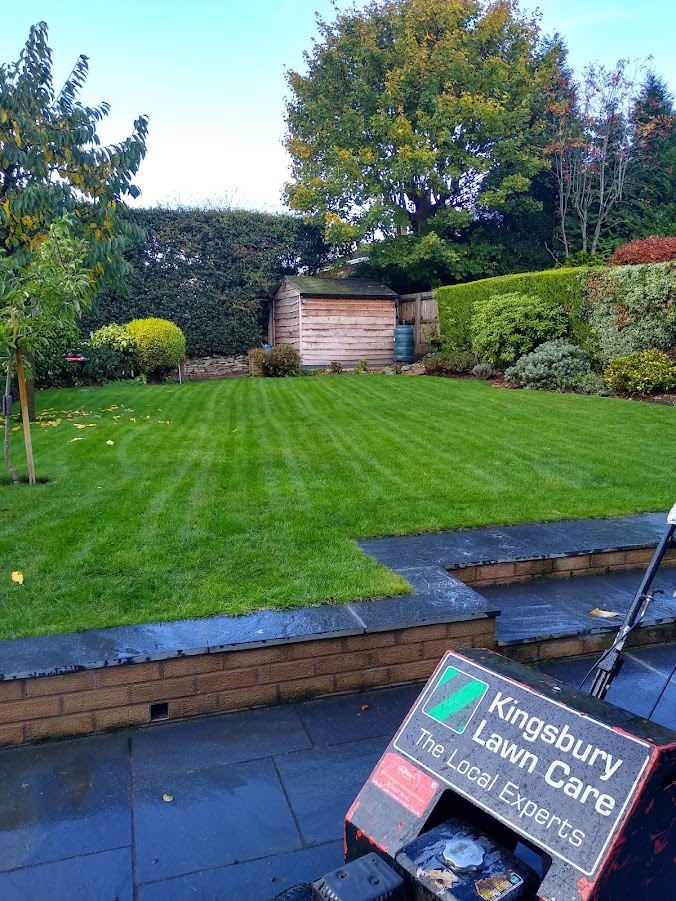
This image is of a rear lawn in Sutton Coldfield which gets aerated each October and is completely moss free thanks to this along with regular moss treatments and quality homeowner care
Considerations For Controlling Moss in Lawns
There are so many factors which cause moss to thrive in lawns, some of which are listed above. We're going to take you through the main ones:
Mowing
It always starts with good mowing! Lawns that are being cut too short become stressed during the months where there is less light and conditions are better suited to moss growth in lawns. If moss is a regular problem each autumn, try increasing your height of cut a little.
Shade
Moss loves shade, so lets see how much of it can be reduced. If there are overhanging trees / shrubs / bushes / hedges surrounding your lawn, consider reducing these each October as soon bird nesting season is completed. It may save some leaf clearance too!
General Dampness
Moss loves a dark and damp surface. Consider brushing and mowing your lawn whenever it is fit to do so over the winter months. Be sure that leaves are being cleared frequently as leaf cover will aid both moss and disease.
Soil Type
As touch on above, clay soils are more prone to moss problems due to the water that they hold. Much of our service area is clay based soils, so we know what it's about! Mass soil exchange (unless you have a major drainage issue) could be overkill, but annual aeration and use of soil improving products will help. With heavier soils, be aware that you can do more harm than good by working on them if they are waterlogged. Pick a dry week to get that winter cut done.
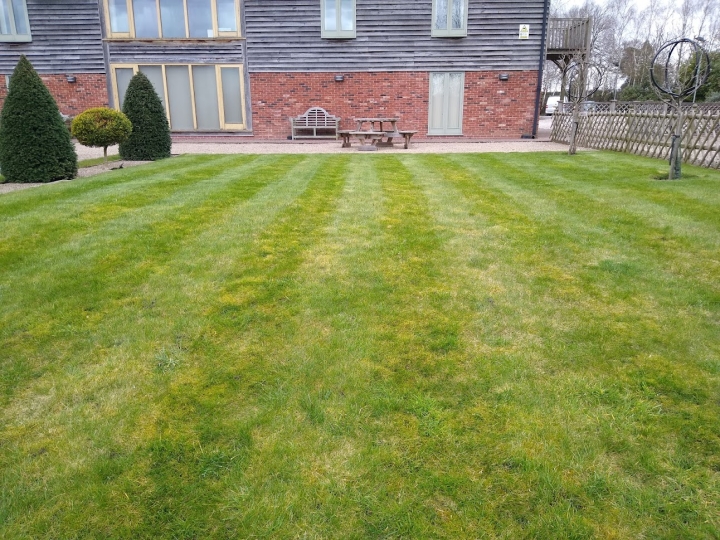

Untreated moss verses treated moss! You can see the vibrant yellow of the live moss on the left, and the dehydrated moss on the right. Our moss control treatments provide the grass with an opportunity to fight back over the darker months.
Moss Treatments
Moss control treatments are a must in any successful lawn maintenance programme. Many lawn care services will apply two moss treatments but given some of our smaller, shadier clay based lawns with apply THREE moss treatments as standard - autumn, winter and spring. We add a product enhancer to wick the moss deep into the plant for the best results. Not only do our treatments hit the moss hard but they aid lawn colour almost instantly too.
Take care if treating your own lawn for moss as products containing iron can leave a streaky finish and stain hardstanding areas.
Lawn Aeration
This is a vital process for a healthy lawn, all the more so one that suffers with moss. Aeration works to make holes in the lawn, and when carried out with a machine gentling de-compacts the top few inches of soil. This in vital in allowing excessive rainfall to move away from the surface of the lawn - getting this water down to the grass roots where it can be benefit rather than play into the hands of moss.
Aeration has much wider ranging benefits such as encouraging a healthier, deeper root system so your lawn can deal with both the wetter and the drier conditions more effectively.
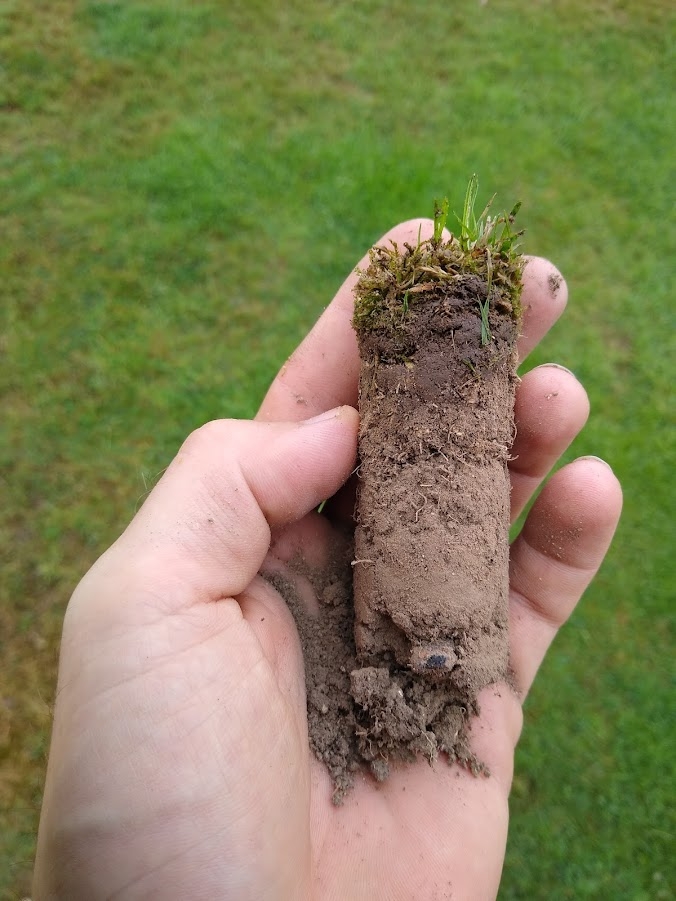
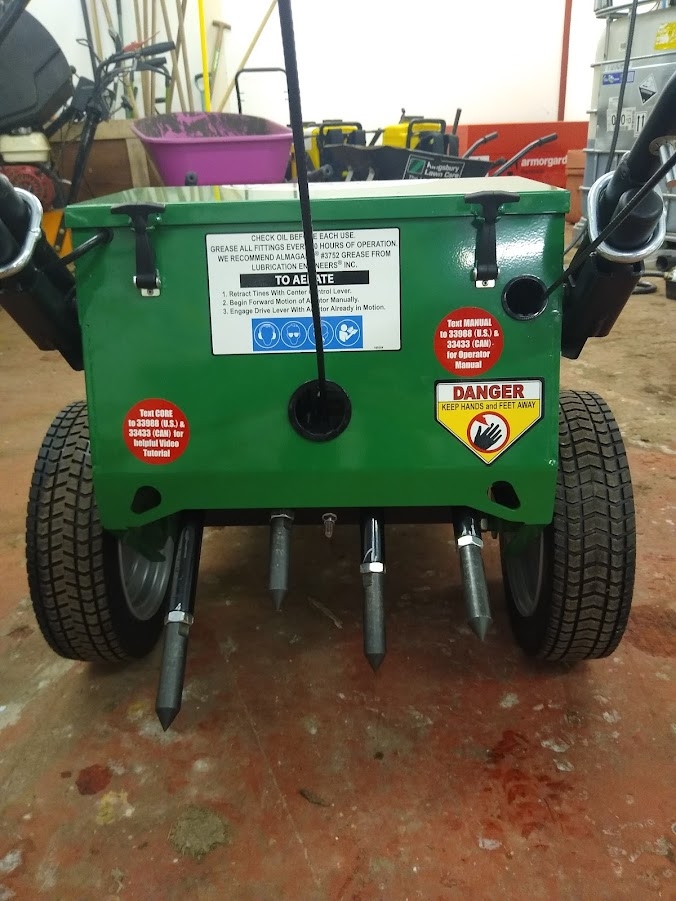

Left: A compacted soil struggling to rehydrate. Here, moss spores were already competing with the grass in September. What this and many other lawns are in need of is an aeration with one of our dedicated machines (centre). The image on the right is how this rear lawn near Coventry looks following it's annual autumn aeration.
Moss Removal From Lawn - Scarification
If preventative action isn't going to be enough, then moss can be physically removed from lawns via the process of scarification. Thatch (dead grasses), is a cause of moss growth when the thatch layer isn't been kept under control. The thatch sits damp through the winter months and moss spores thrive on the surface of it. The good news is that moss scarifies out much easier than crusty sub-subsurface thatch.
Where there is a lot of moss, then including scarification into the plan of action is a must. With every first treatment that we apply we carry out a lawn survey (worth £97) to fully diagnose the causes of moss. We hear of many homeowners who scarify their lawn but because they have not addressed the cause of the moss, it keeps coming back and they redo the same work each spring.
We're firm believers of being proactive and addressing the causes, along with regular moss treatments. Moss in lawns needs to be addressed from both angles.
To Treat Moss First or Scarify First?
It depends...
Where there is so little grass left in the lawn after moss has been able to take hold:
We would likely treat for moss beforehand, and then carry out our Lawn Repair and Renovation. A moss control application can harm young seedlings, so where overseeding is a must, then further moss control can wait.
Within our lawn renovations, we scarify lawns hard to a point that little moss will remain, and it this call would be undertaken at a time of year where grass growth is strong, and the recovery of the grass will outpace the moss.
Where a 'maintenance' level of scarification is required, then treating for moss both before and after scarification is advisable.
Lighter scarification and aeration damages moss plants, rather than us really getting stuck into the lawn as we do within lawn renovations. This is then an ideal time to finish off moss after it has been thinned out by the scarifier.
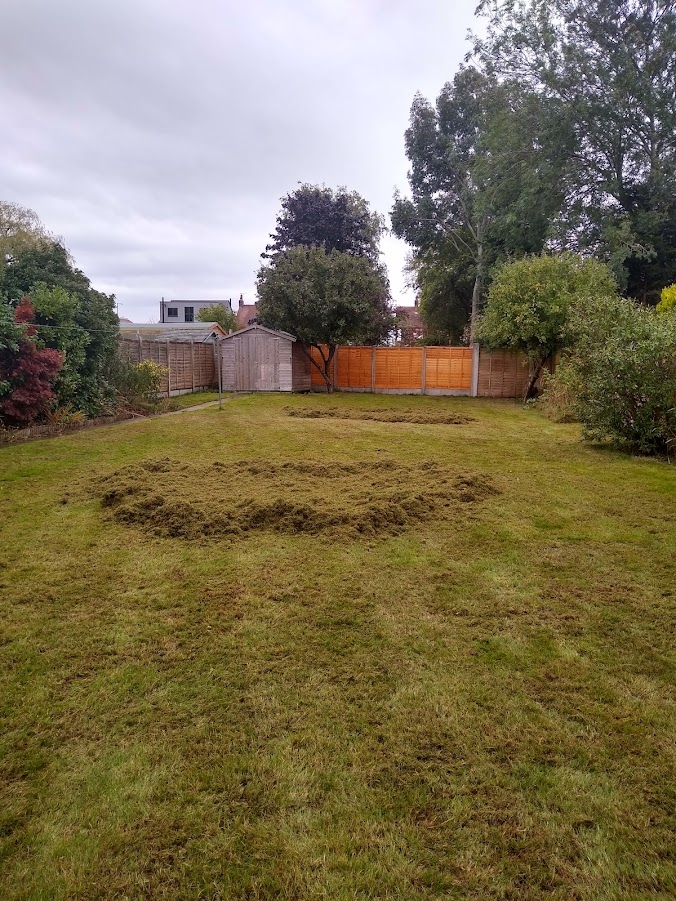
Moss in Lawn - Can We Help?
If your lawn is struggling with moss, we'd be more than happy to investigate the causes and put together a corrective plan of action with you. We can guarantee that you will see results against moss with our autumn, winter and spring lawn treatments.
If you already know that more work is going to be needed to combat the level of moss you may have in your lawn, we can't place enough emphasis on contacting us (or attacking it yourself) as soon as possible. As discussed moss in lawns without action is only going to get worse!
If more aggressive moss is present and mechanical work is looking likely, be aware that scarification is a labour intensive and a popular job. We complete the bulk of our lawn renovations in August / September, so we only have very limited April capacity. Don't delay if your mossy lawn is in need of this work!
